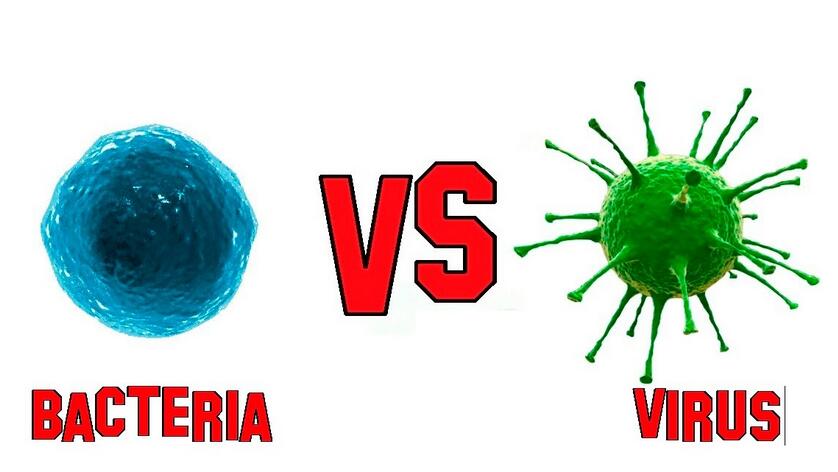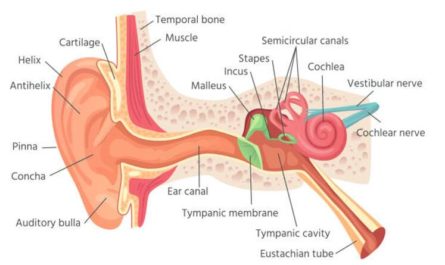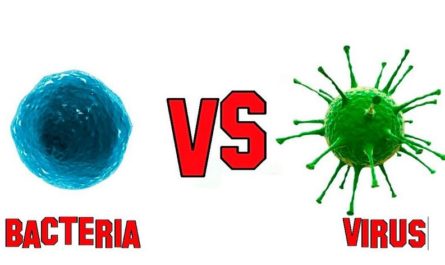When you’re feeling under the weather, it can be challenging to determine whether your fever is caused by a viral or bacterial infection. While both types of infections can share similar symptoms, understanding the differences between viral and bacterial fevers is crucial for proper treatment and recovery. In this article, we’ll explore the key distinctions, symptoms, and treatment approaches for viral and bacterial fevers. This can help empower you to make informed decisions about your health.

What is a Viral Fever?
A viral fever is a common symptom of viral infections, which occur when viruses invade and multiply within the body’s cells. Viruses are microscopic infectious agents that rely on host cells to replicate, and they can cause a wide range of illnesses, from the common cold to more severe conditions like influenza and COVID-19.
When a virus enters the body, the immune system recognizes it as a foreign invader and launches a defense mechanism. This immune response often triggers a fever. This is the body’s way of creating an inhospitable environment for the virus, making it harder for it to thrive.
But how does a fever help fight off viral infections? The elevated body temperature can slow down the replication of viruses and make it more difficult for them to spread throughout the body. Additionally, a fever can stimulate the production of immune cells and proteins that help combat the viral invaders.
It’s important to note that not all viral infections cause fevers. Some viruses, like those responsible for the common cold, may not trigger a significant fever response, while others, like influenza viruses, are more likely to induce high fevers.
Common Symptoms of Viral Fevers
Viral fevers are often accompanied by a constellation of symptoms that can vary depending on the specific virus and the individual’s immune response. Some common symptoms of viral fevers include:
- Fever: A viral fever typically starts with a sudden onset of high body temperature, often exceeding 101°F (38.3°C). The fever may fluctuate and can last for several days or even weeks, depending on the severity of the infection.
- Body aches and pains: Muscle aches, headaches, and joint pain are common complaints with viral fevers. These symptoms are often caused by the body’s inflammatory response to the viral infection.
- Fatigue and weakness: Feeling extremely tired and lacking energy is a hallmark symptom of many viral infections. This fatigue can be overwhelming and may persist even after the fever has subsided.
- Respiratory symptoms: Depending on the virus, you may experience a sore throat, cough, runny nose, or congestion. Respiratory viruses, like those that cause the flu or common cold, often affect the upper respiratory tract.
- Gastrointestinal issues: Some viral infections can cause nausea, vomiting, diarrhea, or abdominal discomfort. Viruses like norovirus and rotavirus are known to cause severe gastrointestinal symptoms.
It’s important to note that viral fevers can range in severity, from mild cases like the common cold to more severe illnesses like influenza or viral meningitis. In some cases, viral infections can lead to complications, especially in individuals with weakened immune systems or underlying health conditions.
What is a Bacterial Fever?
A bacterial fever, on the other hand, is a symptom of a bacterial infection, which occurs when harmful bacteria invade and multiply within the body. Bacteria are single-celled microorganisms that can thrive in various environments, including the human body.
When bacteria enter the body and begin to multiply, the immune system recognizes them as foreign invaders and launches an inflammatory response. This response can cause a fever as the body attempts to create an inhospitable environment for the bacteria.
Unlike viruses, bacteria are living organisms that can survive and replicate independently outside of host cells. They can cause a wide range of infections, from minor skin infections to life-threatening conditions.
Bacterial infections can occur in various parts of the body, including the respiratory system, urinary tract, skin, and digestive system. The location of the infection often determines the specific symptoms experienced by the individual.
Common Symptoms of Bacterial Fevers
Like viral fevers, bacterial fevers can present with a range of symptoms, depending on the type of bacteria and the location of the infection. Some common symptoms of bacterial fevers include:
- Fever: Bacterial fevers often start with a gradual onset of fever, which can be high or low-grade. The fever may be accompanied by chills, shivering, and sweating as the body tries to regulate its temperature.
- Localized symptoms: Depending on the site of infection, you may experience specific symptoms like a sore throat (strep throat), cough and chest pain (pneumonia), or abdominal pain and diarrhea (food poisoning).
- Fatigue and weakness: Feeling tired and lacking energy is common with bacterial infections, as the body’s resources are diverted to fighting off the invading bacteria.
- Nausea and vomiting: Some bacterial infections, particularly those affecting the digestive system, can cause nausea and vomiting.
- Skin rashes or lesions: Certain bacterial infections, like cellulitis or impetigo, can cause skin rashes, lesions, or other visible signs of infection.
It’s important to note that bacterial fevers can range in severity, from mild cases like a sinus infection to life-threatening conditions like sepsis or meningitis. Prompt treatment with appropriate antibiotics is often necessary to prevent complications and aid recovery.

Distinguishing Viral and Bacterial Fevers
While viral and bacterial fevers can share some common symptoms, there are a few key differences that can help distinguish between the two:
- Onset: Viral fevers often have a sudden onset, with symptoms appearing quickly, while bacterial fevers tend to have a more gradual onset, with symptoms developing over a few days.
- Severity: Viral fevers are generally milder and resolve on their own within a week or two, while bacterial fevers can be more severe and may require medical treatment with antibiotics.
- Localized symptoms: Bacterial infections often cause localized symptoms, such as a sore throat, cough, or abdominal pain, while viral infections tend to cause more generalized symptoms like body aches and fatigue.
- Duration: Viral fevers typically last for a shorter period, usually a week or less, while bacterial fevers can persist for a longer duration if left untreated.
- Mucus production: Viral infections often cause increased mucus production, leading to a runny nose or productive cough, while bacterial infections may not necessarily cause increased mucus production.
However, it’s important to note that these distinctions are not always clear-cut, and some infections can have overlapping symptoms. In cases where the cause of the fever is unclear, it’s best to seek medical advice for proper diagnosis and treatment.
Diagnosing Viral and Bacterial Fevers
To accurately diagnose whether a fever is caused by a viral or bacterial infection, healthcare professionals may employ various diagnostic methods, including:
- Medical history and physical examination: Your healthcare provider will ask about your symptoms, their onset, and any potential exposures or risk factors. They will also perform a physical examination to look for signs of infection or other underlying conditions.
- Laboratory tests: Depending on the suspected cause of the fever, your healthcare provider may order laboratory tests, such as blood tests, throat swabs, or urine samples. These tests can help identify the presence of specific viruses or bacteria and guide appropriate treatment.
- Imaging studies: In some cases, imaging techniques like X-rays, CT scans, or MRI scans may be used to visualize the site of infection or rule out other potential causes of fever.
- Rapid diagnostic tests: Certain rapid diagnostic tests, such as those for influenza or streptococcal infections, can provide quick results and help guide treatment decisions.
By combining the information from your medical history, physical examination, and diagnostic tests, your healthcare provider can make an accurate diagnosis and determine the most appropriate course of treatment.
Treating Viral and Bacterial Fevers
The treatment approach for viral and bacterial fevers can differ significantly:
Treating Viral Fevers:
- Viral infections typically resolve on their own without the need for specific antiviral medications, although some severe cases may require antiviral treatment.
- Treatment for viral fevers is typically focused on managing symptoms and supporting the body’s immune response.
- Over-the-counter medications like acetaminophen or ibuprofen can help reduce fever and alleviate body aches and pains.
- Staying hydrated and getting plenty of rest are crucial for recovery.
- Antibiotics are not effective against viral infections and should not be used unless there is a secondary bacterial infection present.
It’s important to note that while viral fevers often resolve on their own, some viral infections can lead to complications, especially in individuals with weakened immune systems or underlying health conditions. In these cases, prompt medical attention and supportive care may be necessary to prevent or manage complications.
Treating Bacterial Fevers:
- Bacterial infections often require treatment with antibiotics to eliminate the bacteria and prevent the infection from spreading or becoming more severe.
- The type of antibiotic prescribed will depend on the specific bacteria causing the infection and the location of the infection.
- In some cases, additional treatments like drainage or surgery may be necessary to address the source of the infection.
- Supportive care, such as fever-reducing medications, fluids, and rest, can also help alleviate symptoms and aid recovery.
It’s crucial to follow your healthcare provider’s instructions carefully when taking antibiotics and to complete the full course of treatment, even if you start feeling better.
Stopping antibiotics too soon can lead to the development of antibiotic-resistant bacteria. This will make future infections more difficult to treat.
Preventing Viral and Bacterial Infections
While it’s not always possible to completely avoid viral and bacterial infections, there are several preventive measures you can take to reduce your risk:
- Practice good hygiene: Wash your hands regularly with soap and water, especially before eating, after using the restroom, and after coughing or sneezing. Avoid touching your face, nose, or mouth with unwashed hands.
- Stay up-to-date on vaccinations: Vaccines can help protect against certain viral and bacterial infections, such as influenza, pneumococcal disease, and hepatitis B.
- Maintain a healthy lifestyle: A balanced diet, regular exercise, and adequate sleep can help strengthen your immune system and reduce your susceptibility to infections.
- Avoid close contact with sick individuals: If possible, limit your exposure to people who are sick or exhibiting symptoms of viral or bacterial infections.
- Practice food safety: Properly handle, cook, and store food to prevent foodborne illnesses caused by bacteria like Salmonella or E. coli.
- Seek prompt medical attention: If you develop symptoms of a viral or bacterial infection, seek medical advice promptly to receive appropriate treatment and prevent complications.
By following these preventive measures and being proactive about your health, you can reduce your risk of contracting viral and bacterial infections and the associated fevers.
When to Seek Medical Attention?
While many viral and mild bacterial fevers can be managed at home, there are certain situations where seeking medical attention is crucial:
- If the fever is accompanied by severe or concerning symptoms, such as difficulty breathing, severe headache, or persistent vomiting.
- If the fever persists for more than a few days or keeps recurring.
- If the fever is accompanied by a rash or other unusual symptoms.
- If the fever is present in infants, young children, or older adults, as they are more susceptible to complications.
- If you have a weakened immune system due to underlying medical conditions or medications.
By seeking prompt medical attention, you can receive an accurate diagnosis and appropriate treatment, which can help prevent complications and promote a faster recovery.
In conclusion
Understanding the differences between viral and bacterial fevers is essential for proper management and treatment. While viral fevers often resolve on their own with supportive care, bacterial fevers may require antibiotic treatment to eliminate the infection.
By being aware of the symptoms, seeking medical advice when necessary, and taking preventive measures, you can ensure that you receive the appropriate care and support for a speedy recovery.






